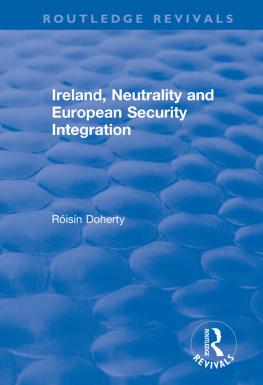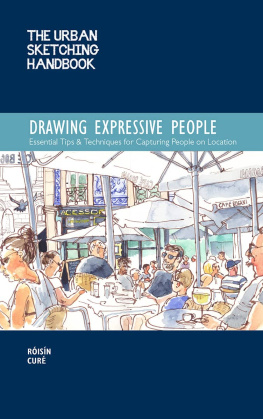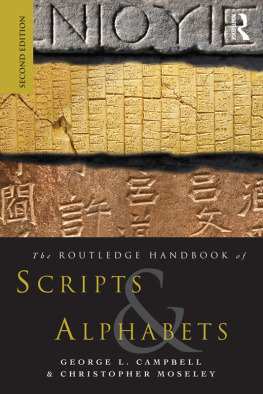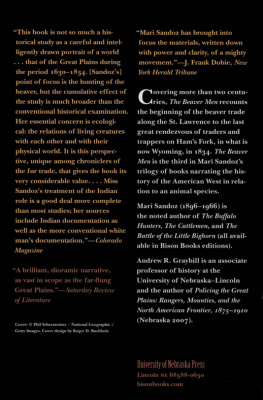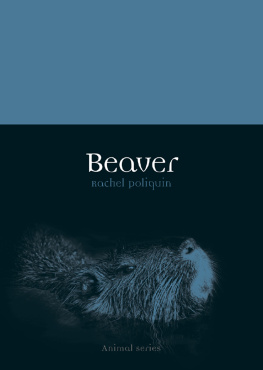Campbell-Palmer Roisin - The Eurasian beaver handbook: ecology and management of Castor fiber
Here you can read online Campbell-Palmer Roisin - The Eurasian beaver handbook: ecology and management of Castor fiber full text of the book (entire story) in english for free. Download pdf and epub, get meaning, cover and reviews about this ebook. City: Europe, year: 2016, publisher: Pelagic Publishing, genre: Romance novel. Description of the work, (preface) as well as reviews are available. Best literature library LitArk.com created for fans of good reading and offers a wide selection of genres:
Romance novel
Science fiction
Adventure
Detective
Science
History
Home and family
Prose
Art
Politics
Computer
Non-fiction
Religion
Business
Children
Humor
Choose a favorite category and find really read worthwhile books. Enjoy immersion in the world of imagination, feel the emotions of the characters or learn something new for yourself, make an fascinating discovery.

- Book:The Eurasian beaver handbook: ecology and management of Castor fiber
- Author:
- Publisher:Pelagic Publishing
- Genre:
- Year:2016
- City:Europe
- Rating:4 / 5
- Favourites:Add to favourites
- Your mark:
- 80
- 1
- 2
- 3
- 4
- 5
The Eurasian beaver handbook: ecology and management of Castor fiber: summary, description and annotation
We offer to read an annotation, description, summary or preface (depends on what the author of the book "The Eurasian beaver handbook: ecology and management of Castor fiber" wrote himself). If you haven't found the necessary information about the book — write in the comments, we will try to find it.
The Eurasian beaver handbook: ecology and management of Castor fiber — read online for free the complete book (whole text) full work
Below is the text of the book, divided by pages. System saving the place of the last page read, allows you to conveniently read the book "The Eurasian beaver handbook: ecology and management of Castor fiber" online for free, without having to search again every time where you left off. Put a bookmark, and you can go to the page where you finished reading at any time.
Font size:
Interval:
Bookmark:

The Eurasian Beaver Handbook: Ecology and Management of Castor fiber
The Eurasian Beaver Handbook: Ecology and Management of Castor fiber
R. Campbell-Palmer, D. Gow, R. Campbell, H. Dickinson, S. Girling, J. Gurnell, D. Halley, S. Jones, S. Lisle, H. Parker, G. Schwab and F. Rosell
CONSERVATION HANDBOOKS SERIES
Pelagic Publishing | www.pelagicpublishing.com
Published by Pelagic Publishing
www.pelagicpublishing.com
PO Box 725, Exeter EX1 9QU, UK
The Eurasian Beaver Handbook: Ecology and Management of Castor fiber
ISBN 978-1-78427-113-8 (Pbk)
ISBN 978-1-78427-114-5 (Hbk)
ISBN 978-1-78427-115-2 (ePub)
ISBN 978-1-78427-116-9 (Mobi)
ISBN 978-1-78427-117-6 (PDF)
Copyright 2016 R. Campbell-Palmer, D. Gow, R. Campbell, H. Dickinson, S. Girling, J. Gurnell, D. Halley, S. Jones, S. Lisle, H. Parker, G. Schwab and F. Rosell
This book should be cited as Campbell-Palmer, R. et al. (2016) The Eurasian Beaver Handbook: Ecology and Management of Castor fiber. Exeter: Pelagic Publishing, UK.
All rights reserved. No part of this document may be produced, stored in a retrieval system, or transmitted in any form or by any means, electronic, mechanical, photocopying, recording or otherwise without prior permission from the publisher. While every effort has been made in the preparation of this book to ensure the accuracy of the information presented, the information contained in this book is sold without warranty, either express or implied. Neither the authors, nor Pelagic Publishing, its agents and distributors will be held liable for any damage or loss caused or alleged to be caused directly or indirectly by this book.
A CIP catalogue record for this book is available from the British Library.
Cover images: beaver, Graham Brown; landscape, Roisin Campbell-Palmer; culvert protection, Skip Lisle; piped dam, Gerhard Schwab.
Primarily funded by Colchester Zoo, the Welsh Wildlife Trust and the Wildlife Trust, with additional contributions from the Royal Zoological Society of Scotland, Bund Naturschutz, Telemark University College and Scottish Wildlife Trust.
Contents
Risn Campbell-Palmer, Field Operations Manager, Scottish Beaver Trial, and Conservation Projects Manager, Royal Zoological Society of Scotland, UK. PhD candidate, Telemark University College, Norway.
Dr Ruairidh Campbell, Wildlife Conservation Research Unit, Department of Zoology, University of Oxford, UK.
Helen Dickinson, Tayside Beaver Project Officer, Scottish Wildlife Trust, UK.
Dr Simon Girling, MRCVS, Head of Veterinary Services, Royal Zoological Society of Scotland, UK.
Derek Gow, Director, Derek Gow Consultancy Ltd, Upcott Grange Farm, Lifton, Devon, UK.
Professor John Gurnell, Queen Mary University of London, UK.
Dr Duncan Halley, Norwegian Institute for Nature Research, Norway.
Simon Jones, Project Manager, Scottish Beaver Trial, and Director of Conservation, Scottish Wildlife Trust, UK.
Skip Lisle, President, Beaver Deceivers International, USA.
Professor Howard Parker, Telemark University College, Norway.
Professor Frank Rosell, Telemark University College, Norway.
Gerhard Schwab, Bibermanagement Sdbayern, Wildbiologe, Germany.
I remember my first real contact with beavers in the wild, 35 years ago, when I was staying on a farm in Jamtland in Sweden. My host, Erik, was a hunter and a farmer who also worked in the local town; his family farm was in beautiful countryside with ospreys, goldeneye ducks and cranes breeding in the bogs; in the forests lived elk and beavers. I remember thinking it was as Scotland should be. One evening, I walked to the sluggish river which ran nearby and, after a mosquito-tormented stalk, I saw my first beaver. It sensed me, though, and with a slap of its tail it was gone. I sat down on a jumble of beaver-felled birch trees, but my wait was in vain. I asked Erik what he thought about the birch trees felled by the beavers across his track. His reply was so sensible: I wait until winter and then drive down with my tractor and trailer and log up those trees they are nicely seasoned and ready for my log store. And sometimes I hunt one; would you like beaver for supper tomorrow? Ill get some out of the deep freeze. I thought it tasted good, nicely braised something between brown hare and roe.
I liked the matter-of-fact way in which he lived with the beavers but he also recognised their value in the wetland ecosystem. That value is what this excellent book is about; its written by 12 experts who have brought together a wealth of experience and, most importantly, a mine of information on how we can learn to live with beavers again in the United Kingdom.
Im so pleased that beavers are back in our country, because I recognise they are essential in helping to manage natural wetland ecosystems. Its been a long time coming, and much longer than I expected when I was part of the first serious discussions as a main board member of Scottish Natural Heritage back in the early 1990s. A successful scientific trial has been carried out by the Royal Zoological Society of Scotland and Scottish Wildlife Trust on land owned by Forestry Commission Scotland, and with scientific input from Scottish Natural Heritage. Beavers, being beavers, have also cropped up on their own in the Tay catchment of Scotland and occasionally elsewhere in Britain. The Scottish Government will soon, I hope, make the decision that this important keystone species should once again be part of our natural fauna, and we can see them restored to their original haunts.
During my wanderings looking at beavers and talking with beaver experts in a variety of European countries, I have been impressed by their knowledge and their understanding of the species within their home countries. They take a common-sense approach of working and living with an animal that can spring a few surprises.
In the pages that follow, the reader can get everything they need to know about the history and ecology of beavers, their impacts on human operations and their value within the ecosystem. This restoring of functioning ecosystems in such a fragile world will be more and more at the centre of our nature-conservation ethos. The authors write on many aspects of how to manage beavers and our activities; from proactive dam management to novel methods of reducing their impact on our interests. There is information on trapping, translocation, culling and many other subjects. Its always been my view that, to have beavers back throughout Britain, we will need robust management and a rapid response to those who ask for help to act against beavers that cause problems.
The main part of this handbook finishes with learning to live with beavers and that could be the most important aspect. I believe that its crucial for farmer, fisher, forester or any of us to learn to accept that although some species may at times cause us problems, we should remember the myriad species and actions of the natural world that allow us to farm and fish, to grow crops and trees, and to have fresh water and breathe fresh air. We, like the beavers, are part of the great ecosystem we call the Earth. Let us celebrate the return of the water engineer supreme.
Roy Dennis, 2015
Highland Foundation for Wildlife
Rydw in cofio fy nghyswllt cyntaf erioed gydag afancod yn y gwyllt, 35 mlynedd yn l pan oeddwn in aros ar fferm yn Jamtland yn Sweden. Roeddwn in aros gydag Erik, heliwr a ffermwr a oedd hefyd yn gweithio yn y dref leol. Roedd ei fferm deuluol yng nghanol cefn gwlad bendigedig gyda gweilch y pysgod, hwyaid llygaid aur a garanod yn magu ar y corsydd ac, yn y coedwigoedd, roedd elcod ac afancod yn byw. Rydw in cofio meddwl mai fel hyn y dylair Alban fod. Un noson, fe gerddais i at yr afon a oedd yn llifon araf heibio ac, ar l cael fy erlid gan fosgito, fe welais i fy afanc cyntaf; ond roedd wedi synhwyro fy mod in nesu ac ar drawiad ei gynffon, roedd wedi diflannu. Fe eisteddais i i lawr ar bentwr o goed bedw wediu torri gan yr afanc, ond offer fur aros. Holais Erik am ei farn am y coed bedw wediu torri gan yr afancod ar draws ei lwybr. Roedd ei ymateb mor ddoeth: Rydw in aros tan y gaeaf ac wedyn yn gyrru i lawr gyda nhractor ar trelar ac yn casglur coed maen nhwn barod yn hwylus iawn i mi ar gyfer fy str o goed. Ac weithiau fe fydda in hela un. Fyddet tin hoffi cael afanc i swper nos fory? Mi dynna i un allan or rhewgell. Roeddwn in meddwl ei fod yn neis, wedii goginion dda, rhywbeth rhwng ysgyfarnog ac iwrch.
Font size:
Interval:
Bookmark:
Similar books «The Eurasian beaver handbook: ecology and management of Castor fiber»
Look at similar books to The Eurasian beaver handbook: ecology and management of Castor fiber. We have selected literature similar in name and meaning in the hope of providing readers with more options to find new, interesting, not yet read works.
Discussion, reviews of the book The Eurasian beaver handbook: ecology and management of Castor fiber and just readers' own opinions. Leave your comments, write what you think about the work, its meaning or the main characters. Specify what exactly you liked and what you didn't like, and why you think so.


